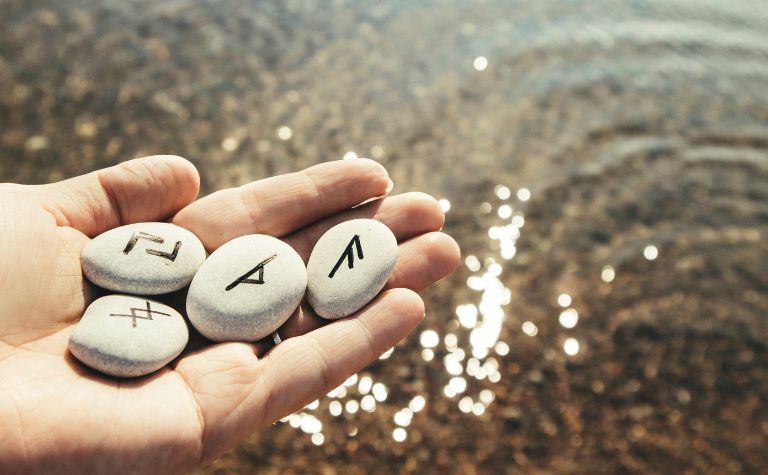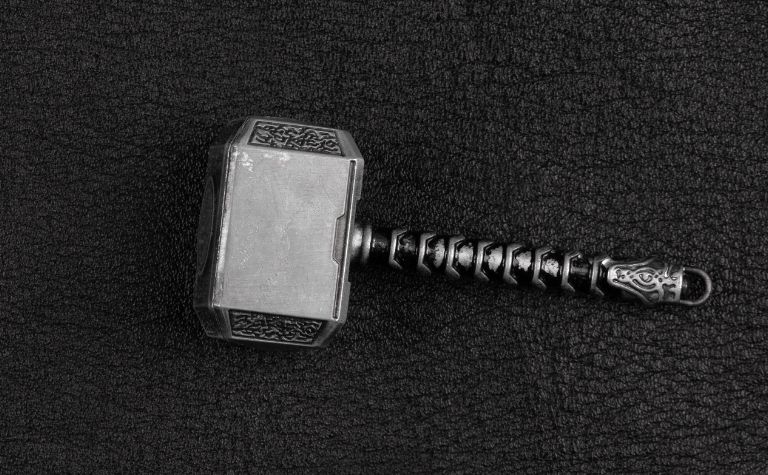The Marvel Cinematic Universe (MCU) has recently brought Norse mythology characters like Odin, Thor, and Loki back into the public consciousness.
However, not everything in the MCU comics and movies stems from actual stories in Norse mythology. Take the Tesseract, for example; was it a part of Norse mythology?
The Tesseract isn’t in Norse mythology. In its MCU form, it is entirely the invention of the Marvel creators and has nothing to do with ancient myths.
However, the idea of a tesseract appeared much earlier in mathematician and sci-fi writer Charles Howard Hinton’s 1888 book A New Era of Thought.
This article will explain what a tesseract is, what it is in the Marvel Cinematic Universe, and why its concept is so hard for humans to grasp and understand.
It will also outline other places in literature where it has appeared. Finally, it will examine some of Marvel’s other connections to Norse mythology, including things they got right and some they got wrong.
Also, see Do Norse Gods Care About People? to learn more.

Explaining the Tesseract in Mathematical Terms
There are various dictionary definitions for the word tesseract, but all revolve around a central theme: a figure that exists in four dimensions (4D).
YourDictionary offers these three definitions for the word: [1]
- “A four-dimensional hypercube, having 16 corners.”
- “The four-dimensional analogue of a cube; a 4D polytope bounded by eight cubes (in the same way a cube is bounded by six squares).”
- “Any of various fictional mechanisms that explain extradimensional, superluminal, or time travel outside the geometry of the physical universe.”
The first definition is the easiest one to understand. The second is the definition of a tesseract in mathematical terms. The third and final definition is more science fiction in origin.
However, it’s ScienceABC that breaks it down into simple, easy-to-understand terms:
A person who draws a square using four lines on a piece of paper is drawing a square in 2D. If that same person were to draw a square using 12 lines (where three lines extend from each corner), they’d be drawing a 3D cube instead.
The tesseract is the next 4D figure in that sequence. It’s a cube, but instead of having 2D squares on each side, it has another 3D cube on each side.
In other words, “each corner has four lines that separate from it” and “each face is a cube.” [2]
It’s a complex shape to visualize and for good reason. Human beings experience the world in 3D.
Concepts like 4D, 5D, and 6D are almost impossible for their minds to comprehend. However, some scientists and mathematicians have posited that such a shape could exist.
The mathematician Charles Howard Hinton speaks about it at length in chapters three, seven, eight, and nine of his book A New Era of Thought. [3]
It’s heavy reading and not easy for the layperson to understand. However, it’s pretty interesting for those curious about four-dimensional space.
Also, see Does Norse Mythology Have Demons? to learn more.

What Is the Tesseract in the MCU?
Whenever mathematicians or scientists have an intriguing, largely theoretical idea, science fiction writers tend to swoop in and use it for their art.
The same is true of the tesseract. Hinton spoke about the tesseract in A New Era of Thought in practical, geometric terms.
In science fiction and fantasy works, however, it’s something entirely different.
It takes on a more mystical role, specifically within the realms of time travel and extradimensional space, power, and energy.
In the MCU, the tesseract is a powerful, seemingly magical item that can be used to travel through wormholes in space and time. Initially, it held one of the six infinity stones – the space stone – and multiple characters in the MCU, both good and bad, want to harness its seemingly limitless power.
There is much speculation about the tesseract in the MCU. Many characters study and discuss it throughout the various movies.
Some believe it’s an “unlimited source of energy” because it is powered by space. [4]
Others believe it is at least semi-sentient, having a will and intelligence. It also emitted gamma radiation and was used to power multiple weapons and other devices throughout time.
Surprisingly, the Marvel movies and comic books aren’t the only places that readers (or watchers) can find the tesseract.
Also, see Why Did Thor Kill the Giants? to learn more.
Where Else Does the Tesseract Appear in Popular Media?
Other books and movies have used the tesseract (or some version of it) in their plot points, including:
- A Wrinkle in Time (both the book and the movie)
- The Tesseract (both the book and the movie)
- Interstellar (movie)
- Cube²: Hypercube (movie)
- Annihilation (movie)
- Fez (video game)
So while it may never have popped up in Norse mythology, it’s a frequent character in more modern pop culture.

Is Marvel Based on Norse Mythology?
Marvel isn’t based on Norse mythology. After all, most Marvel characters, like Iron Man, Captain America, and Nick Fury, have nothing to do with the Norse myths.
However, Marvel did incorporate some Norse characters and locations in their comics and movies.
Just because Marvel uses some Norse characters in its work doesn’t mean it sticks to the source material.
There are some things that the creators get right, but some other points stray pretty far away from the original myths.
Things the MCU Gets Right, According to Norse Mythology
Here are some of the things that Marvel keeps pretty close to the original myths:
- The attitudes and personalities of the characters are similar to those in the tales.
- Marvel talks about the nine worlds, though it doesn’t use many of them in the films.
- The realms Marvel did showcase were spot-on in design.
- Two goats pull Thor’s chariot in Thor: Love and Thunder, just as in the myths.
- Odin only has one good eye.
- Thor wields Mjolnir.
Things the MCU Gets Wrong, According to Norse Mythology
However, for the things the MCU got right, there were dozens more that they changed completely. Some of the most significant changes include the following:
- In the myths, Loki and Thor aren’t adopted brothers; instead, Loki is Odin’s blood brother.
- There’s no love story between Thor and a human in the myths. In the myths, he’s married to Sif.
- There’s nothing in the myths about people being “worthy” to wield Mjolnir.
- Odin sacrificed his eye intentionally; he didn’t lose it in battle.
- Hel, called Hela in the MCU, is Loki’s daughter in Norse mythology, not Odin’s.
These are only a few differences between the MCU and Norse mythology, and this is nowhere near exhaustive.
Final Thoughts
The tesseract never appears in Norse mythology. However, Marvel didn’t create it either. They just put their own spin on it, like they often do.
Also, see Why Did Loki Kill Balder? to learn more.
